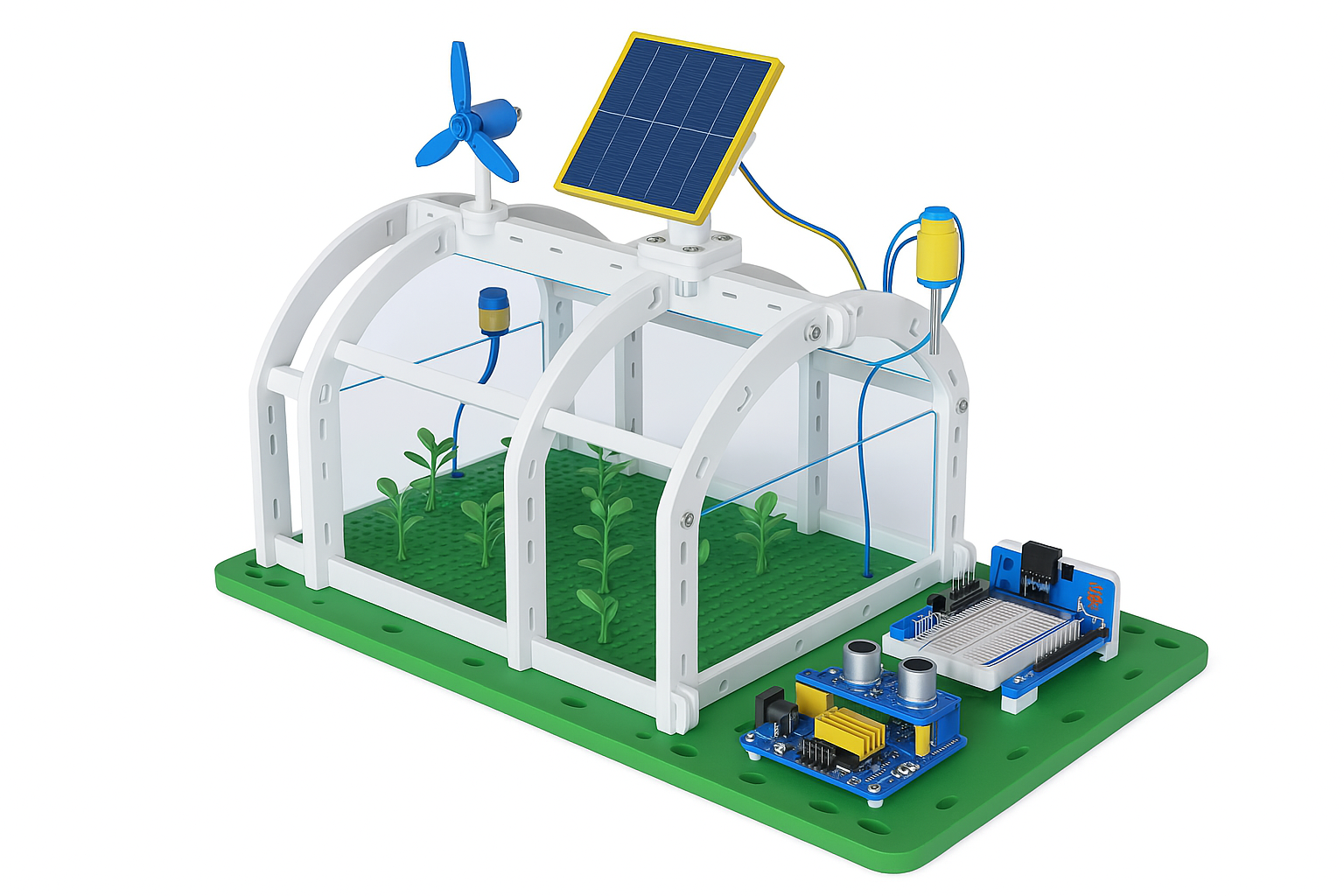Smart Greenhouse Automation (Arduino-Based)
In this hands-on lesson, students design, prototype, and deploy a fully automated smart greenhouse system using Arduino microcontrollers, IoT sensors, and wireless modules. The project simulates a modern farming environment where technology optimizes crop yield while conserving natural resources.
Students explore how AI and IoT systems work together to monitor and regulate the growing environment. By the end of the lesson, learners gain practical insight into smart agriculture and sustainable design.

Key Concepts Covered
- IoT sensor integration and real-time data logging
- Environmental monitoring and adaptive system control
- Automated irrigation and smart ventilation
- Sustainable agriculture practices and climate responsiveness
- Sensor fusion and rule-based decision-making algorithms
Components Used
| Component | Function |
|---|---|
| DHT22 / BME280 | Temperature and humidity monitoring |
| YL-69 / Capacitive Moisture Sensor | Moisture-based irrigation control |
| BH1750 / TSL2561 | Light intensity sensing |
| Relay Module + Mini Water Pump | Controls water flow to soil |
| Solenoid Valves | Open/close water channels |
| Mini Servo / Stepper Motors | Ventilation window automation |
| OLED / I2C LCD Display | Local display of environmental data |
| ESP8266 / ESP32 | Wireless data transmission (Wi-Fi and Cloud) |
Learning Outcomes
- Build an Arduino-controlled greenhouse with wireless monitoring
- Apply feedback loop programming to maintain ideal climate conditions
- Understand and apply sustainable agri-tech design
- Create cloud-connected dashboards for remote monitoring
- Work with sensor calibration and system debugging
Optional Extensions
- AI-powered prediction: Use basic machine learning models (e.g., linear regression) for irrigation forecasting
- Mobile dashboard: Build an app (e.g., with MIT App Inventor or Blynk) for greenhouse control
- Energy optimization: Explore solar power integration for sustainability